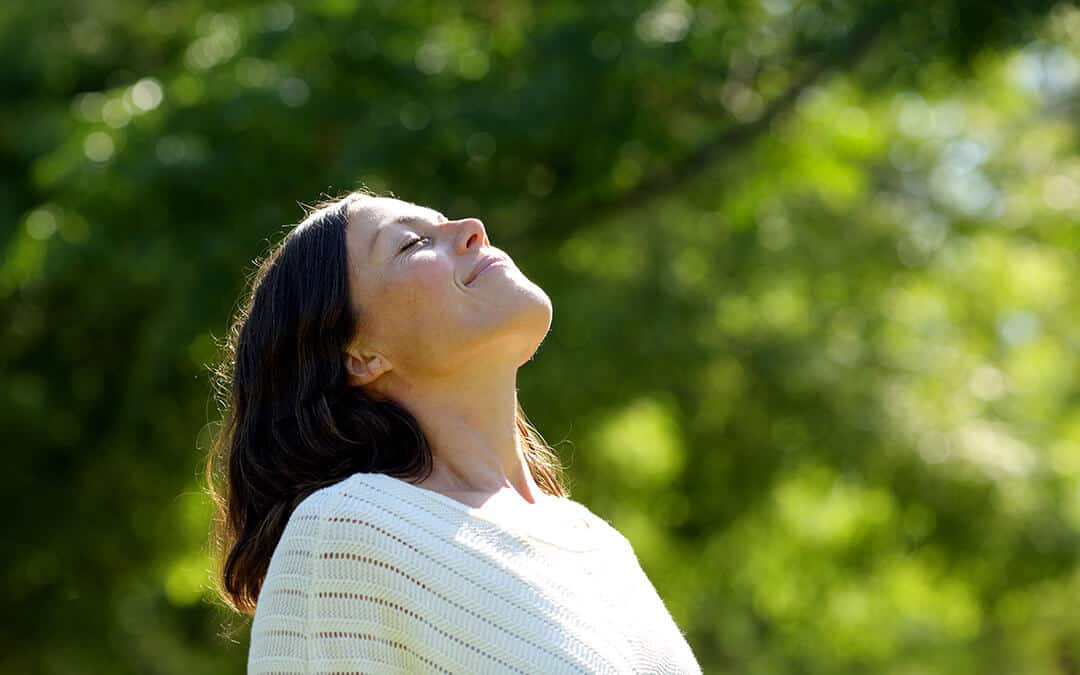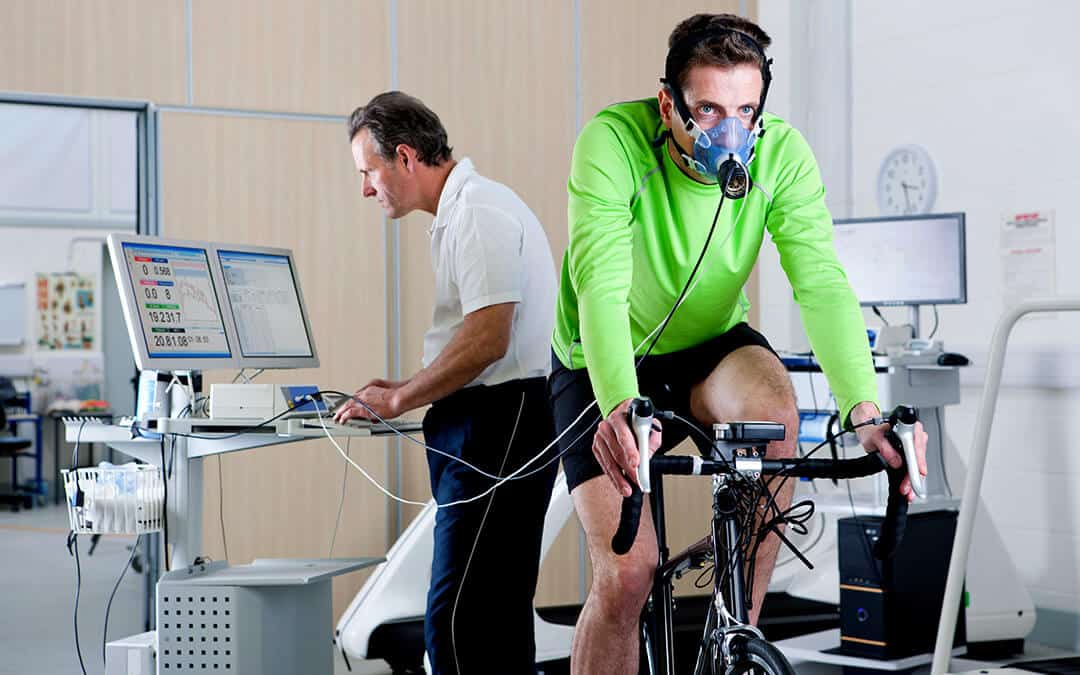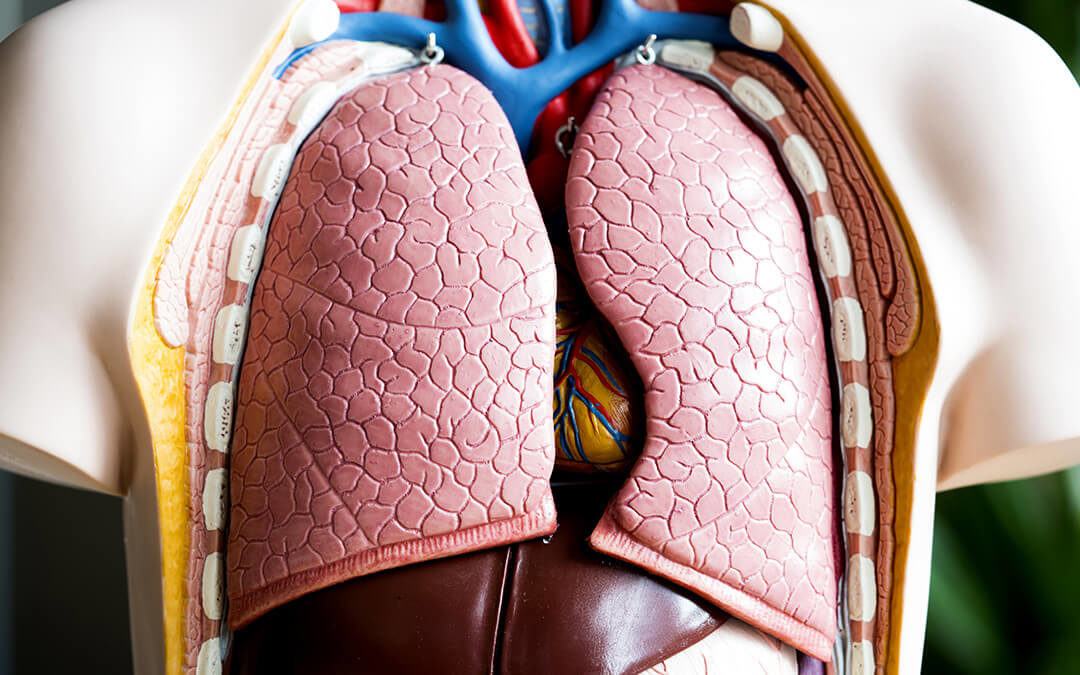To live, our bodies need oxygen. When we breathe air into our lungs, the oxygen it contains – 21% to be exact – enters our bloodstream. As blood flows through the body, it carries oxygen to the cells that make up our tissues and organs. In exchange for the received oxygen, each cell releases carbon dioxide, which is carried, in the bloodstream, to the lungs, where it is then expelled from the body through exhalation. This gas exchange – oxygen for carbon dioxide – happens every time we breathe, and is central to the functioning of the respiratory system.
Respiration is the process of breathing in oxygen and breathing out carbon dioxide. Cells use oxygen to create the energy that powers the body, keeping it alive. The waste product of this energy-producing activity is carbon dioxide.
What Is The Respiratory System?
The respiratory system is made up of the nose, the mouth, the trachea, and the lungs. The ribcage protects the lungs, which fill up most of the space in the chest, along with the heart. Because there are two lungs, incoming air is split between two bronchial tubes, each of which channels the air down into the smaller bronchioles.

Air enters the body through the nose, the mouth, or both. After air is inhaled, it passes from the throat into the trachea. Air that enters through the nose is filtered (by hairs) and regulated (by sinuses) for temperature and humidity. From the trachea, the warmed and moistened air enters one of two bronchial tubes, which lead to the lungs. The right lung contains three lobes, the left lung contains two. Each lobe, or section, of the lungs is made of sponge-like tissue, which expands and contracts with every breath.
The bronchial tubes are lined with hair-like cilia, which are covered in mucus. Sticky mucus helps filter out dust, germs, and other breathed-in particles, and the cilia move this matter through the bronchial tubes, so that it’s easily coughed, sneezed, or spat out (or swallowed), protecting the lungs from contaminants.
What Happens In The Lungs?
Traveling into the trachea, or windpipe, through the throat and voice box, air moves into both sides of the lungs through bronchial passageways. Within the lungs, bronchioles branch out into smaller and smaller tubes, which lead to air sacs called alveoli. The lungs contain millions of alveoli. Through the thin walls of the alveoli, breathed-in oxygen passes into the bloodstream, while to-be-breathed-out carbon dioxide passes out of the bloodstream.
Blood vessels called capillaries carry oxygen to cells. Capillaries also carry carbon dioxide back to the alveoli, where it is sent out of the lungs and breathed out of the body. When blood is flowing through the capillaries, the hemoglobin protein carries oxygen on red blood cells into the heart – and the heart pumps oxygenated blood through the entire body. The hemoglobin then returns carbon dioxide to the lungs, for subsequent exhalation. Blood enters the capillaries through the pulmonary artery, and exits through the pulmonary vein.
The Function Of The Diaphragm
Inhaling air into the lungs is also known as inspiration, while exhaling air from the lungs is known as expiration. The main breathing muscle is called the diaphragm. Located beneath the lungs, the diaphragm helps draw air into the chest and then push it out of the body. When the diaphragm contracts, or tightens, the chest expands as air is pulled into the lungs. When the diaphragm relaxes, air is pushed out of the lungs. Assisting the diaphragm are abdominal muscles, neck and shoulder muscles, and muscles around the ribs – all in service of bringing oxygen into, and taking carbon dioxide out of, the body.
The diaphragm separates the chest from the abdomen, stretching and expanding the lungs during the in-breath, by pulling them downward – and then relaxing and releasing the lungs on the out-breath, pushing them up inside the chest cavity. When the body is active, such as during exercise, the abdominal muscles assist with expelling air from the lungs, in the form of forced expiration. Intercostal muscles that reinforce the ribcage work in tandem to regulate lung function.

Breathing With The Brain
Most of the time, breathing is automatic, happening without conscious awareness. Though the brain monitors and regulates the internal act of breathing, the body seldom needs a reminder to continue inhaling and exhaling. Breathing can be controlled, however, as while talking, singing, dancing, or meditating. When breathing with awareness (of breathing), the body has more control over the messages it sends to the brain. Slowing the rate of breath during a moment of panic, for example, helps diminish the distress signals that panicked breathing, or hyperventilating, send to the brain.
The brain receives constant signals from the body, indicating the amounts of oxygen and carbon dioxide that are present in the bloodstream. Depending on the body’s activity level at any given time, the respiratory center of brain sends signals to the muscles surrounding the lungs, allowing breathing rates to adjust as needed, from moment to moment.
Oxygenated Energy
When the body is in an active state, it uses up more energy – more oxygen – than when at rest. The sleeping body breathes at a slower rate than the running body, because less physical energy is needed to sleep than to run. During physical exercise, the lungs must send more oxygen into the bloodstream – and expel more carbon dioxide – to give the body energy for the increased activity.
The brain itself cannot function without a steady supply of fresh oxygen, nor a way to release stale carbon dioxide. Food digestion, reading and thinking, walking and jumping, opening and closing the eyes – all of these depend on the constancy of breath.
Chronic lung conditions can impair the body’s ability to breathe. Supplemental oxygen can help the body maintain healthy blood oxygen levels. Contact us to learn more about delivering supplemental medical-grade oxygen.
